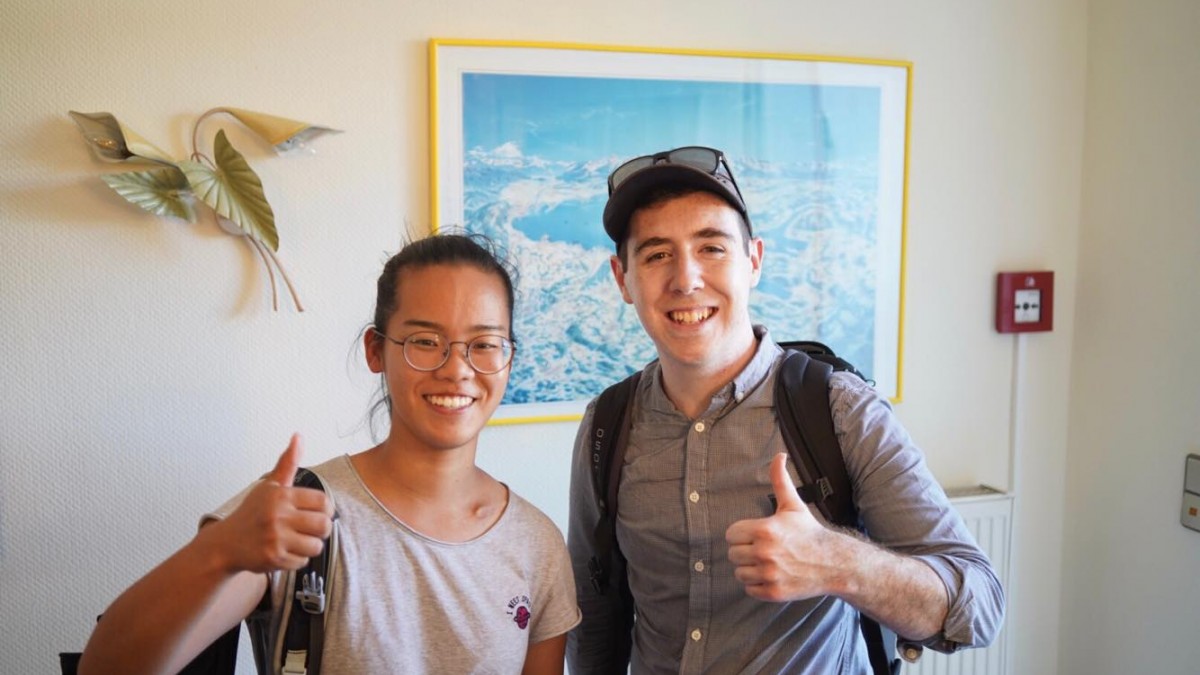What we learned from meeting 39 Nobel Prize winners
Two ANU physics students, Janet Zhong and Tim Hume, recently joined over 500 young scientists for the Lindau Nobel Laureate Meeting in Germany. They share what they learned from rubbing shoulders with 39 Nobel Laureates in physics.
Nobel Prize winners are not that different to other scientists.
All the Nobel Prize winners had very different personalities. They are regular people, like you and me, and just as fallible. The difference between a Nobel Prize winner and other scientists is not as large as you might expect.
Luck can play a role in winning a Nobel Prize.
Michael Kosterlitz (2016 Nobel Prize) said that winning a Nobel Prize is 95 percent luck and five percent smarts. However, some Nobel Laureates knew exactly what they were searching for and had to convince their supervisors to let them try their ground-breaking idea.
No path to success is linear.
Wolfgang Ketterle (2001 Nobel Prize) switched fields completely several times before his ground-breaking results on Bose-Einstein Condensates. “General skills and the ability to learn are much more important than specific knowledge,” he said. Donna Strickland (2018 Nobel Prize) temporarily gave up the idea of an academic career and took up a position as a technician for several years. Brian Schmidt (2011 Nobel Prize) was actually fourth on the list for an ANU job and only got it because the other three people turned it down. Eight days into his new position, he discovered the expansion of the universe was accelerating.
Fundamental research is important for society.
Many of the Laureates emphasised the importance of curiosity-driven research, because this forms a pipeline of knowledge that fuels the innovation and applications of science decades into the future. For example, Wi-Fi arose from CSIRO scientists studying black holes and focussed laser beams have enabled the invention of optical tweezers used in medical research.
The scope of the physics (and science) world is big!
We met researchers and Nobel Laureates spanning all fields in physics, from astrophysics, cold matter physics, biophysics, topological physics and more. It allowed us to appreciate how much bigger the physics world is than our own specialised fields. This is actually very inspiring news - there are so many interesting open problems out there!
A Nobel Prize is a big responsibility.
Winning a Nobel Prize transforms your life and opens the gateway to many other opportunities - and also responsibilities. Donna Strickland (2018 Nobel Prize) actually said there were several times when she wanted to give the Nobel Prize back! Laureates are expected to serve as representatives of scientists from their country, their field and around the world.
It’s okay to be star-struck.
Being somewhat sceptical of prestige and fame, the meeting affected us more than we expected. Janet’s field of study, topological photonics, was invented by Duncan Haldane (2016 Nobel Prize), so seeing him just wandering around and getting to ask him questions was pretty surreal. Tim spoke to 2018 Laureate, Gérard Mourou, about nuclear physics experiments that could be made possible with (VERY) high energy lasers! It was incredible to have this conversation with one of the scientists who has led the way in advancing the frontier of this technology. The whole meeting planted the seeds for future ambitions by making us think of big picture physics as well as the roles we may play in society.
So, how do you get to attend one of these meetings?
All of the young scientists apply to the Lindau Council and applications are assessed by their Review Panel. Anyone can apply directly, but you can also be invited to apply with a nomination from a partner institution or a Nobel Laureate. The Australian Academy of Science nominates up to ten PhD candidates and postdoctoral researchers. Every year the discipline theme of the meeting changes. It is good to keep in mind the year when your discipline will have a meeting. One of the Lindau Aussies knew of the meeting four years ago and even set an alarm a year in advance to remind herself to apply!
We were chosen because of both academic merit and our community involvement. So if you work hard and get involved, you never know how this might come back around in the future. An important takeaway is that there are plenty of cool opportunities in science! We are just two undergraduates lucky enough to already travel and meet amazing people through physics.
We thank the ANU Research School of Physics, the Australian Academy of Science, and the Science and Industry Endowment Fund for supporting us.

